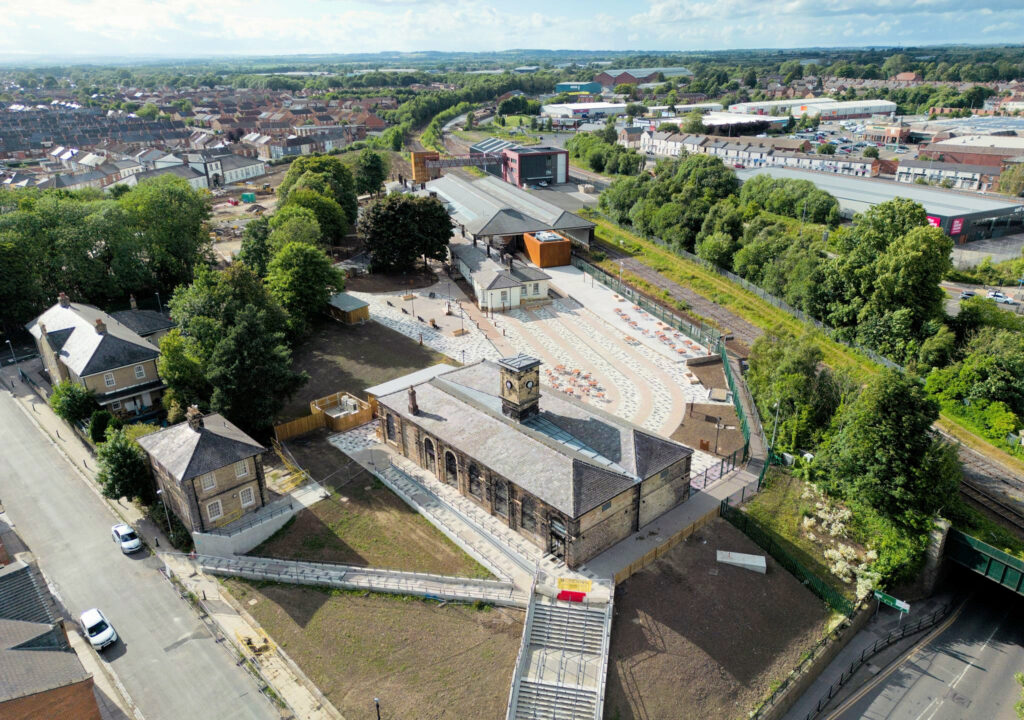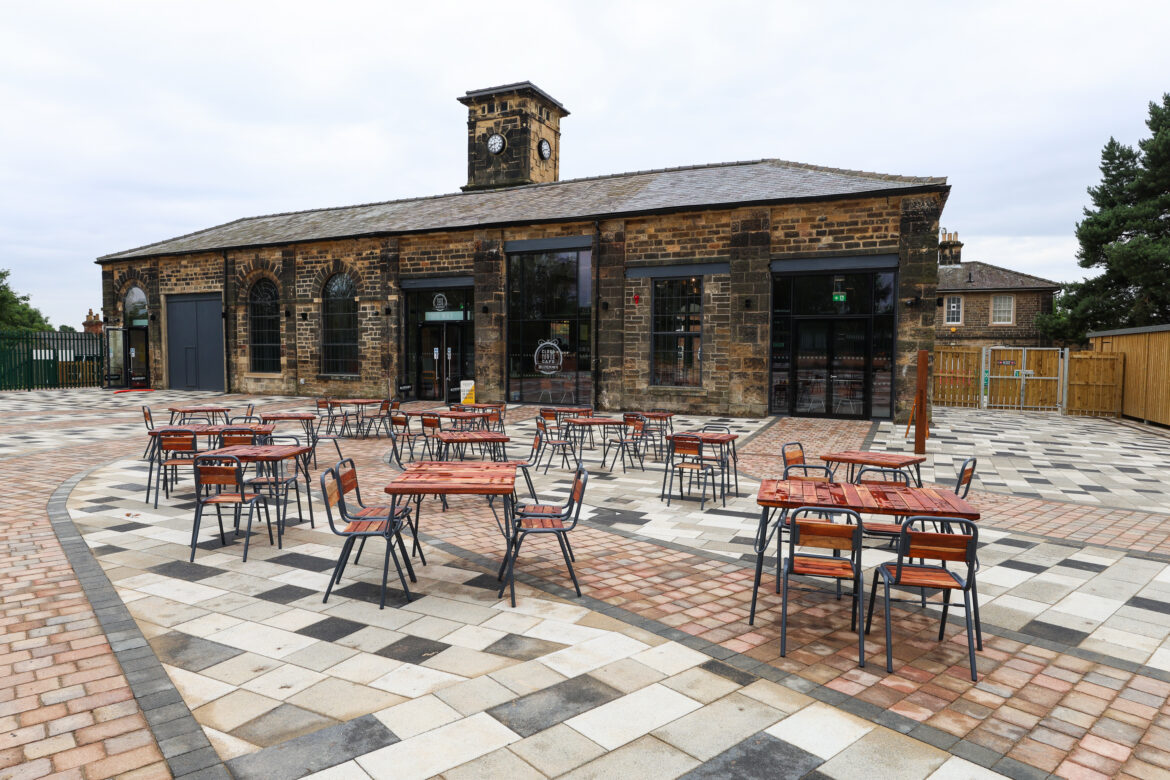Introduction
Hopetown, an area located in the heart of Darlington, County Durham, holds a unique place in Britain’s industrial and cultural history. Often referred to as the birthplace of the modern railway, Hopetown became central to the development of early rail transport, particularly during the 19th century, when Darlington emerged as a pioneering town in locomotive engineering. Today, Hopetown represents a fusion of heritage, community, and regeneration, with much of its identity rooted in the achievements of the Stockton and Darlington Railway (S&DR) and the engineering excellence of the town’s railway works.
While Hopetown is geographically a relatively small district, its influence extends far beyond Darlington. It is both a symbol of Britain’s industrial revolution and a modern community hub undergoing transformation. This essay explores the history, industrial significance, community development, and present-day role of Hopetown in Darlington.

Origins and Historical Background
The name Hopetown can be traced back to the early 19th century, when the area developed alongside Darlington’s rapid industrial growth. Before the arrival of the railway, Darlington was a modest market town, with agriculture and small-scale industries forming the backbone of its economy. That would change dramatically after 1825, when the Stockton and Darlington Railway opened—the first public railway in the world to use steam locomotives for passenger and freight transport.
Hopetown’s proximity to the railway made it a natural site for workshops, housing, and other facilities supporting the railway industry. The district was gradually populated by railway workers and their families, forming a close-knit working-class community with strong ties to the industrial revolution.
The Railway and Hopetown’s Growth
The Stockton and Darlington Railway, inaugurated on 27 September 1825, marked the dawn of the railway age. Locomotives designed by George Stephenson, such as the famous Locomotion No. 1, demonstrated the practical potential of steam-powered rail transport. Darlington became synonymous with railway innovation, and Hopetown, being strategically placed, developed as a hub of railway-related activity.
The Hopetown Carriage Works
In 1853, the Hopetown Carriage Works were established. These works manufactured and repaired railway carriages for the North Eastern Railway, one of the companies that absorbed the Stockton and Darlington Railway. The Hopetown Works were integral in shaping Darlington’s reputation for skilled craftsmanship and engineering. Thousands of local men and women were employed there, and the works became one of the largest industrial employers in the town.
The workshops not only produced rolling stock but also reflected the town’s engineering innovation. The carriages built at Hopetown travelled across Britain, making the site central to the growth of the railway network during the Victorian era.
The Locomotive Works
Alongside carriage building, locomotive construction also became crucial to Hopetown’s identity. Darlington’s works produced steam engines that powered freight and passenger transport across the North East and beyond. The presence of these works attracted skilled engineers, apprentices, and tradespeople, embedding engineering into the culture of Darlington.
Community Life in Hopetown
With the expansion of railway employment, Hopetown quickly grew into a bustling working-class neighbourhood. Rows of terraced houses were built to accommodate workers and their families. Community spirit was strong, with social clubs, churches, and schools forming the backbone of daily life.
Railway employment often ran in families, with generations of Darlington residents working in the Hopetown works. Skilled trades such as carpentry, metalworking, and engineering were highly respected, and the district developed a proud identity tied to industry and hard work.
Sport and recreation also flourished. Many railway workers were active in football and cricket clubs, some of which became the foundations for sporting institutions in Darlington. The combination of work, family, and community pride gave Hopetown a unique character that persisted even as industries changed.
Decline of the Works
The 20th century brought both prosperity and challenges to Hopetown. During the early decades, the railway remained a cornerstone of British transport and industry. However, by the mid-20th century, railways were facing stiff competition from road transport and later air travel.
Nationalisation of the railways in 1948 brought the Hopetown works under the control of British Railways, but declining demand for rolling stock and restructuring of the industry eventually led to closures. By the 1960s and 1970s, much of the industrial heart of Hopetown had diminished, leaving behind vacant workshops and a community facing economic hardship.
This period was difficult for many families, as job losses forced workers to retrain or move away. Yet, despite these challenges, Hopetown retained its strong sense of community identity.
Preservation and Heritage
The decline of industry in Hopetown coincided with a growing awareness of the historical significance of the railway heritage in Darlington. Recognising the pioneering role of the Stockton and Darlington Railway, efforts were made to preserve the legacy of Hopetown and its connection to railway history.
Head of Steam Railway Museum
The Head of Steam – Darlington Railway Museum, located in the former North Road railway station, became a cornerstone of heritage preservation. Opened in 1975, the museum celebrates the history of the Stockton and Darlington Railway and showcases locomotives, carriages, and artefacts associated with Hopetown and the wider region.
Locomotion No. 1, the original 1825 engine, was long displayed here (it has since been moved to the new Locomotion museum in Shildon, another key railway town). However, Head of Steam continues to serve as a vital cultural and educational resource, keeping Hopetown’s story alive for future generations.
Locomotion Heritage Project
Hopetown is also part of the Locomotion Heritage Project, a wider initiative to preserve and celebrate railway history across County Durham and the Tees Valley. This project ties together Darlington, Shildon, and Stockton in a collective heritage narrative, marking the bicentenary of the Stockton and Darlington Railway in 2025.
Regeneration and Modern Identity
In recent years, Hopetown has experienced regeneration efforts aimed at revitalising the area while honouring its industrial past. The redevelopment of railway heritage sites into museums, visitor attractions, and community spaces has helped breathe new life into the district.
Housing projects, community initiatives, and investment in infrastructure are modernising Hopetown, making it an attractive place to live while retaining its historic character. The area is increasingly recognised not only as an industrial relic but as a living community with cultural, social, and educational value.
Darlington Borough Council has invested in the regeneration of Hopetown and the surrounding North Road area, including new housing developments and improvements to transport links. The balance between preserving heritage and supporting modern growth remains a central theme in the area’s development.
Hopetown and the Stockton & Darlington Railway Bicentenary (2025)
One of the most significant upcoming events for Hopetown is the bicentenary of the Stockton and Darlington Railway in 2025. This milestone is expected to bring international attention to Darlington, Shildon, and Stockton, recognising their role in shaping the modern world.
Hopetown will play a pivotal role in these celebrations. The area’s museums, former railway works, and historic sites will host events, exhibitions, and commemorations. The bicentenary is not only an opportunity to celebrate the past but also a catalyst for tourism, economic growth, and community pride.
Conclusion
Hopetown, Darlington, may appear at first glance to be a small and modest district, but its historical and cultural significance is vast. Born out of the railway revolution of the 19th century, Hopetown became a centre of engineering, craftsmanship, and community life. The Hopetown Carriage Works and related railway industries gave the district its identity, while the resilience of its people carried it through the challenges of industrial decline.
Today, Hopetown stands as both a reminder of Britain’s industrial heritage and a community looking to the future. The preservation of its railway legacy through museums and regeneration projects ensures that Hopetown’s story will not be forgotten. With the approaching bicentenary of the Stockton and Darlington Railway, Hopetown is once again poised to play a central role in telling the story of the railway age—not only to Britain but to the wider world.
Hopetown is more than just a place on the map; it is a symbol of innovation, resilience, and community spirit. Its journey from industrial hub to heritage landmark reflects broader themes in British history, reminding us of the enduring importance of places shaped by the industrial revolution.

